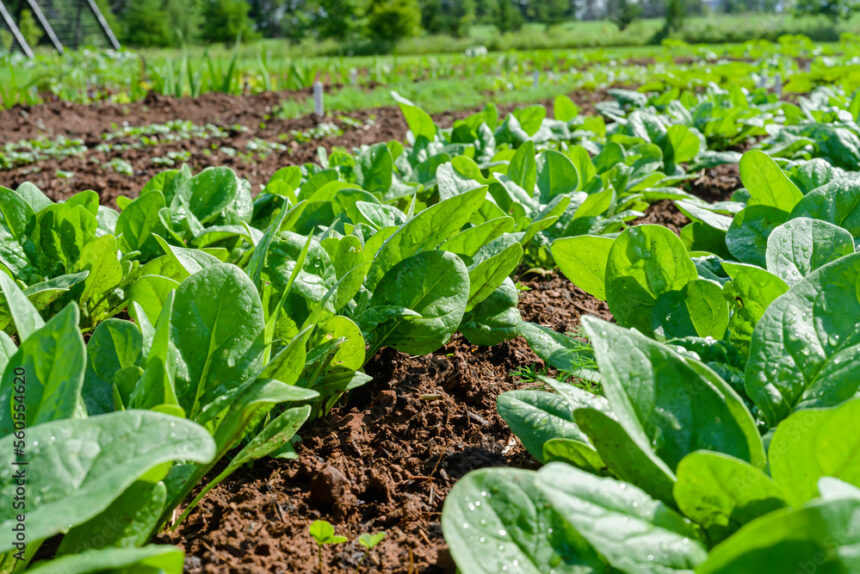When growing spinach in South Africa, there are several infections and diseases that you should watch out for to ensure the health and productivity of your crop. Here are some common ones:
- Downy Mildew (Peronospora farinosa): Downy mildew is a fungal disease that affects spinach plants. It causes yellow or pale green spots on the upper surface of the leaves and a grayish-purple growth on the undersides. To prevent downy mildew, avoid overhead watering and provide adequate spacing between plants for good air circulation.
- Fusarium Wilt (Fusarium oxysporum): Fusarium wilt is a soil-borne fungal disease that affects many vegetable crops, including spinach. It causes wilting, yellowing, and stunting of plants. The best preventive measure is to use disease-resistant spinach varieties and practice crop rotation.
- Anthracnose (Colletotrichum species): Anthracnose is a fungal disease that can affect spinach leaves and stems. It causes dark, water-soaked lesions that eventually turn tan or gray. To prevent anthracnose, avoid overcrowding and ensure good drainage in your growing area.
- Bacterial Leaf Spot (Xanthomonas campestris pv. vitians): Bacterial leaf spot is a common disease in spinach. It causes small, water-soaked lesions with yellow halos on the leaves, which eventually turn brown and papery. To manage bacterial leaf spot, avoid overhead irrigation and remove infected plant material.
- White Rust (Albugo occidentalis): White rust is a fungal disease that affects spinach and other leafy vegetables. It causes raised, white pustules on the undersides of leaves and can lead to severe defoliation. Practice crop rotation and remove infected plants to prevent the spread of white rust.
- Root Knot Nematodes (Meloidogyne species): Nematodes are microscopic worms that can infect the roots of spinach plants, causing galls and stunted growth. Use nematode-resistant spinach varieties and practice crop rotation to minimize nematode problems.
To effectively manage these infections and diseases, it is crucial to maintain good overall plant health, provide adequate irrigation, ensure proper spacing between plants, practice crop rotation, and promptly remove any infected plant material. Additionally, you may consider consulting with local agricultural extension services or horticulturists for region-specific advice and recommendations.
Join 'Farmers Mag' WhatsApp Channel
Get the latest Farming news and tips delivered straight to your WhatsApp
CLICK HERE TO JOIN






